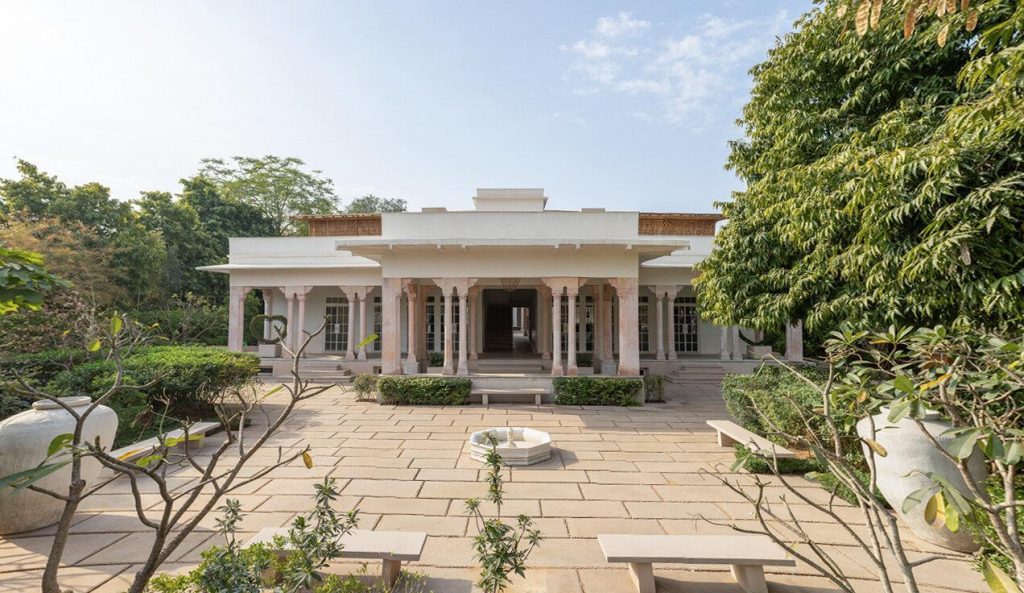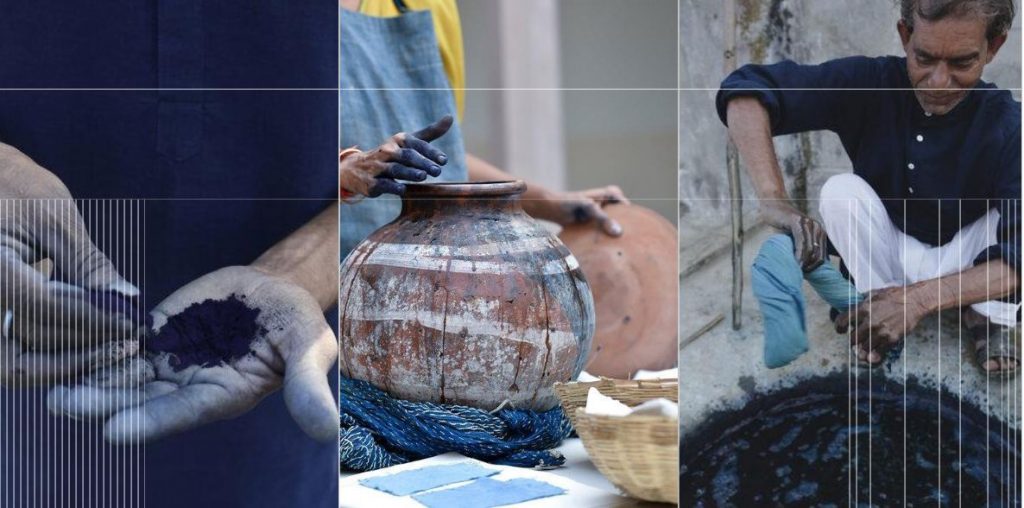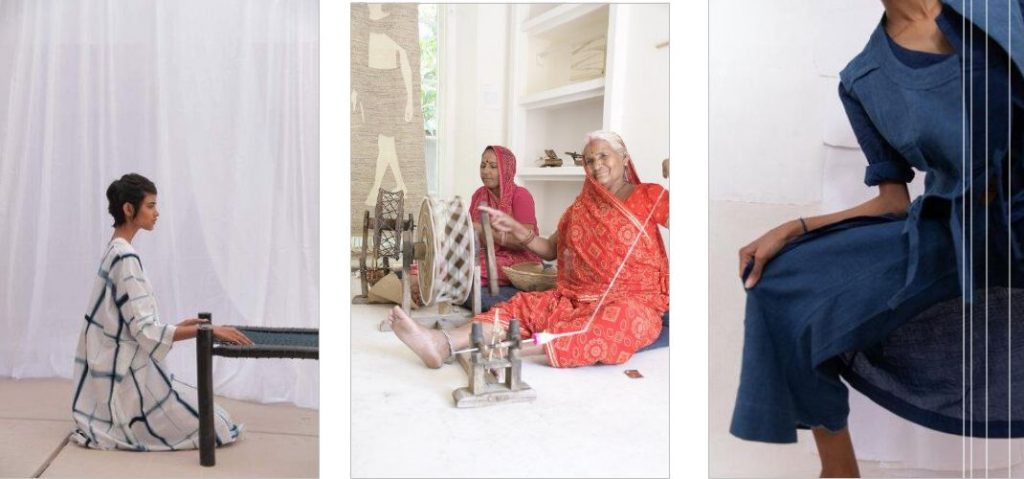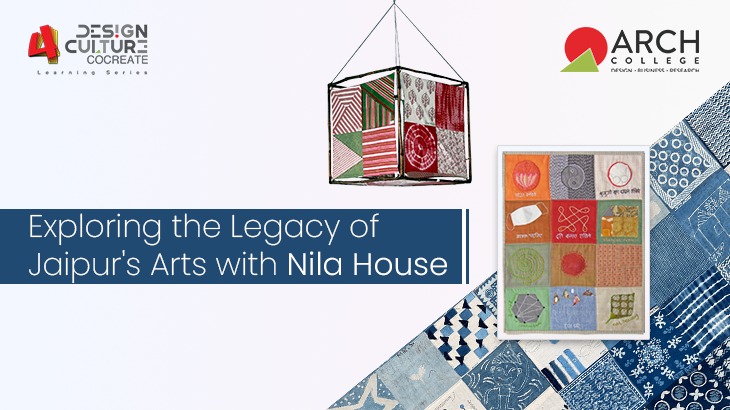Jaipur, the Pink City of India, is a vibrant tapestry of history, culture, and art. Known for its majestic palaces, bustling bazaars, and intricate handicrafts, Jaipur has long been a haven for artisans and designers. The city’s rich heritage is reflected in its traditional arts, from block printing to blue pottery, each carrying the stories of generations. However, in today’s rapidly changing world, many of these timeless arts face the threat of disappearing, making efforts to preserve them more crucial than ever. Among those dedicated to this mission is Nila House, Jaipur. Nila House stands as a beacon of hope and innovation, dedicated to preserving and revitalizing traditional arts while reimagining them for contemporary audiences.
As part of our recent Design Culture Co-create Learning Series, Anuradha Singh, the founder of Neela House, delivered an inspiring session on the intrinsic connection between Indian traditions and modern design. She explained how Indian culture has always embraced art, design, and sustainability, and emphasized that the key lies in blending these timeless elements with contemporary design practices. In this blog, we will explore her journey, the story behind Nila House, and its mission to keep Jaipur’s artistry alive. This dialogue is especially valuable for design students, offering insights into how passion, purpose, and creativity can make a meaningful impact on the world of art and design.
Where Did the Journey Begin? The Early Inspirations Behind Nila House
Growing up in a family deeply rooted in the world of crafts, Anuradha fondly recalls her early years surrounded by creativity and tradition. Her father, founder of Gujarat Emporium, would often take her along to visit skilled artisans, sparking her interest in the intricate beauty of handmade creations. Even when they lived overseas, her father would transform their home into an open house for art enthusiasts, showcasing their exquisite collection. These formative experiences instilled a profound appreciation for craftsmanship in her and paved the way for the establishment of Nila House, where the legacy of traditional arts continues to thrive.

How Do Cultural Inspirations Influence the Evolution of Design?
According to its founder, art has been integral to everyday life in India for generations. The artisanal crafts today were once practical items utilized in kitchens and daily chores. Fabrics that now adorn our interiors were once commonplace in daily attire. Sustainability is now a global buzzword, yet practices like repurposing sarees for children’s clothing or blankets have been a longstanding tradition for centuries. Like Nila House, future designers should aim to bridge the gap between modern design concepts and age-old craft traditions, celebrating the rich heritage of Indian arts while promoting sustainable practices for the future.
Nila House: More Than a Studio
Nila House serves as a hub for over 3,000 skilled craftsmen, offering vital support to artisan communities nationwide. It embodies a fusion of roles—as an interactive cultural center, a museum preserving traditional arts, a shop offering unique artisanal creations, and a platform for dynamic cultural programming. Here, traditional crafts, art, and music come together to celebrate India’s rich cultural heritage and engage the community.

Eco-Friendly Dyeing: The Rise of Natural Indigo

The chemicals used in conventional dyeing processes severely pollute local water bodies, posing a threat to both nature and community health. In response, many brands and designers are now shifting towards natural dyes and sustainable dyeing practices. Natural dyeing with indigo is one such technique, offering a more eco-friendly alternative to chemical dyes.
Ms Anuradha Singh explained that traditional methods, a well-guarded secret passed down through generations of skilled craftsmen, use natural ingredients to create vibrant and lasting colours. Interestingly, the indigo dye comes from a plant that is not initially blue. The dye turns blue only after it undergoes oxidation. Additionally, indigo is hydrophobic, meaning it doesn’t dissolve in water naturally, so a reducing agent is added to make the dye soluble for fabric dyeing. Nila House draws its name from the Hindi word “Nila,” meaning blue. This name is a tribute to the rich history of indigo dyeing, a craft deeply rooted in Indian heritage.
From Tradition to Trend Through Co-Creation
Craftsmen often need direction to align their skills with current trends, and this is where designers play a crucial role. By providing guidance and incorporating contemporary design elements, designers help artisans create pieces that appeal to modern tastes. Nila House believes in the concept of co-creation, collaborating with renowned designers, brands, and artisans to ensure traditional crafts remain desirable and relevant for the future.

In summary, every craft tells a story of passion, craftsmanship, and a timeless legacy that bridges the past with the future. Through collaborative efforts with designers, Nila House breathes new life into ancient techniques, creating crafts that are not only culturally rich but also irresistibly contemporary. This unique approach preserves Jaipur’s rich cultural heritage and makes these crafts desirable and relevant in today’s world.
At ARCH, we embody the essence of Indian design philosophy—honouring tradition while embracing innovation. We believe in equipping our students with the skills to reinterpret age-old practices for modern contexts. Through hands-on learning and collaboration with artisans, we empower future designers to create solutions that resonate globally while preserving our cultural heritage.
Join us and embrace the transformative power of creativity and tradition. Together, let’s inspire and innovate for a sustainable and culturally rich tomorrow. Don’t miss out on our other blogs covering a range of design learning sessions, where we explore various facets of design education and practice.
